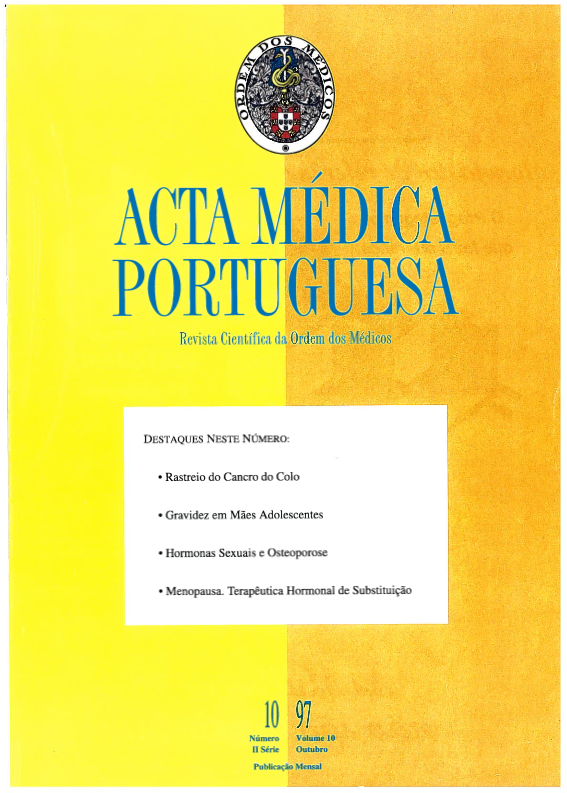Inflammatory smears in cervicovaginal cytology. A finding meaning infection?.
DOI:
https://doi.org/10.20344/amp.2469Abstract
Inflammatory changes are relatively frequent findings in cervical smears and are generally believed to be a consequence of genital infection. However, clinical signs of infection are frequently absent and no consensus exists on the management of these patients. The objective of this study was to assess whether or not inflammatory smears are exclusively a consequence of genital infection. For this purpose, the prevalence of genital infection in a group of women with inflammatory cells in the cervical smear and a control group with normal smears was compared.Sixty-two regularly menstruating women aged 17 to 48 years, attending the outpatient Gynaecology sector of S. João Hospital, were prospectively evaluated. Cervical smears were analysed by the same cytologist who chose 10 inflammatory cells per high power field (400x) as the cut-off value for normality. Infection by Candida spp., Trichomonas vaginalis, Neisseria gonorrhoeae, Mycoplasma hominis, Ureaplasma urealyticum, Chlamydia trachomatis and bacterial vaginosis was investigated. Human Papillomavirus infection was evaluated by colposcopy and biopsy of abnormal colposcopic findings.Thirty-four women and inflammatory cells on their cervical smear and 15 of these (44%) had a genital infection. Of the 28 women with normal smears, 12 (43%) had a genital infection. No statistically significant difference in the prevalence of infection was found between the two groups.Our results suggest that the presence of inflammatory cells in cervical smears is not necessarily due to infection and other causes may be responsible for their appearance.Downloads
Downloads
How to Cite
Issue
Section
License
All the articles published in the AMP are open access and comply with the requirements of funding agencies or academic institutions. The AMP is governed by the terms of the Creative Commons ‘Attribution – Non-Commercial Use - (CC-BY-NC)’ license, regarding the use by third parties.
It is the author’s responsibility to obtain approval for the reproduction of figures, tables, etc. from other publications.
Upon acceptance of an article for publication, the authors will be asked to complete the ICMJE “Copyright Liability and Copyright Sharing Statement “(http://www.actamedicaportuguesa.com/info/AMP-NormasPublicacao.pdf) and the “Declaration of Potential Conflicts of Interest” (http:// www.icmje.org/conflicts-of-interest). An e-mail will be sent to the corresponding author to acknowledge receipt of the manuscript.
After publication, the authors are authorised to make their articles available in repositories of their institutions of origin, as long as they always mention where they were published and according to the Creative Commons license.









